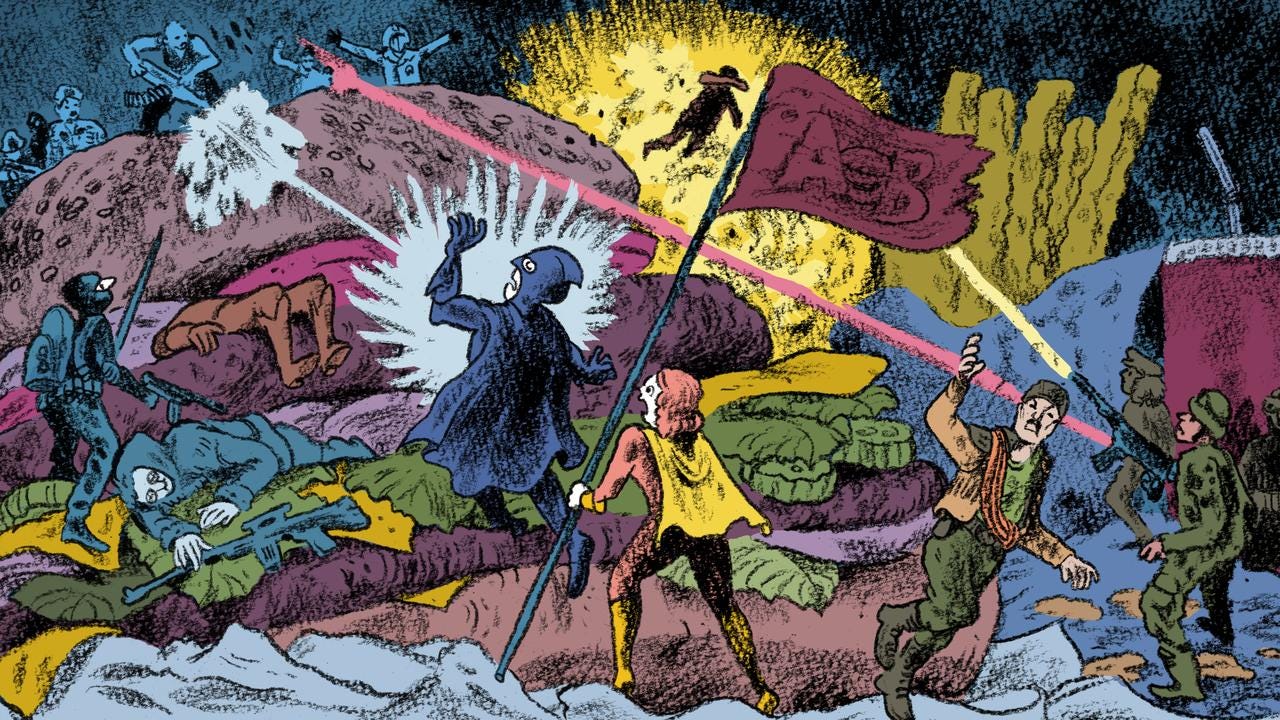The Superhero Saga of Brooklyn’s Weirdest Burger Joint
When a comic book fiend realizes his longtime dream of opening a superhero-themed eatery, a battle of epic proportions is only just beginning.
I. Call to Adventure
Steve Bala can remember the day back in 1982 when he unwrapped his first two “G.I. Joe” action figures. A few weeks later, “G.I. Joe: A Real American Hero” comic books premiered on shelves, and it felt like destiny. When the Saturday morning cartoon hit the airwaves, the battle cry “Yo Joe!” entered his heart through his eardrums.
Twenty-six years later, the trademark war whoop of the Joes still took Steve’s breath away. He made a pilgrimage every Wednesday to Midtown Comics near Times Square to browse the latest graphic novels and figurines — some “G.I. Joe,” some “Star Trek,” some from the world of Stan Lee or the D.C. universe. He had two “G.I. Joe” tattoos, one a back piece. Gainful employment as a grown man had become a means to fund his toy-buying habits. And his apartment boasted rows of warriors and spaceships. He’d broken up with a close girlfriend a few years earlier when she told him, “If we get married, this stuff has to go.”…
Keep reading with a 7-day free trial
Subscribe to Narratively to keep reading this post and get 7 days of free access to the full post archives.





